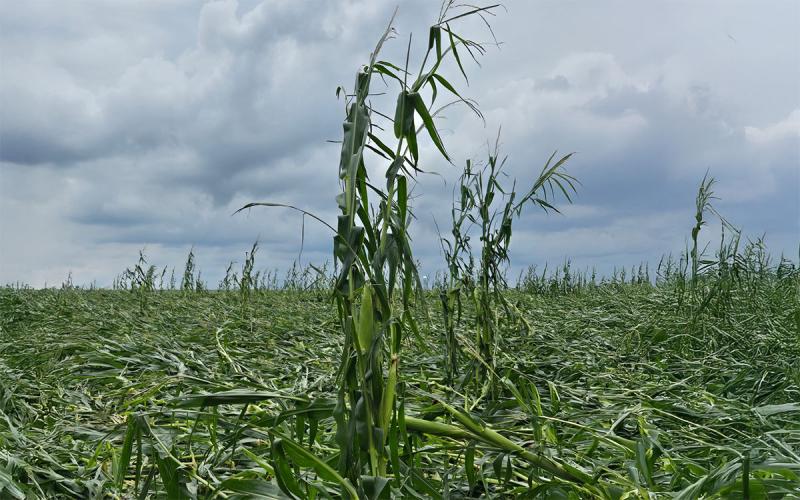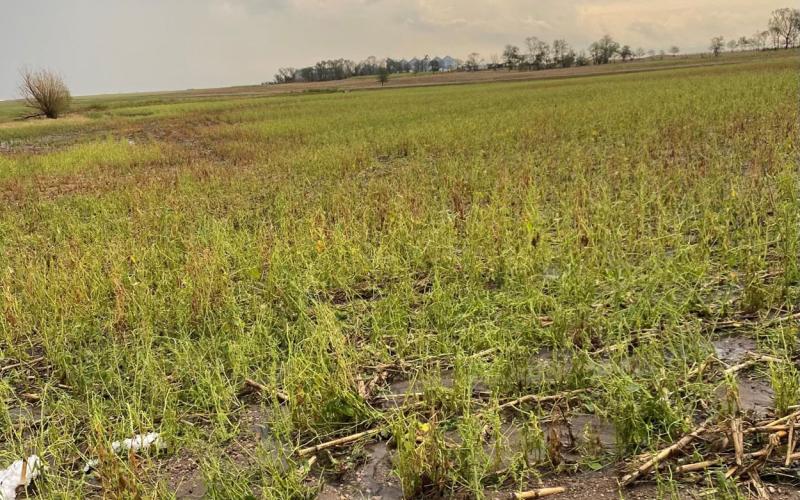Originally written by Megan Erickson, former SDSU Extension Nutrition Field Specialist. Updated by Anna Barr, former SDSU Extension Farm to School Nutrition Field Specialist.
South Dakota is no stranger to power outages and power surges from weather events. From this, arises concerns about food loss and food safety when refrigerators and freezers (cold storage appliances) do not have power to operate. The following actions can be taken before, during and after power outages to keep your cold foods safe.
Before a Power Outage

-
Plug cold storage appliances into a dedicated outlet that is not connected to a circuit protected by a Ground Fault Interrupter (GFI) device. GFI’s are easily tripped by power surges, shutting off power to the freezer and/or refrigerator.
-
Reduce freezer temperature to -10°F or -20°F if an extended power failure is anticipated. The colder the food, the longer it takes to thaw.
-
Consolidate cold foods. Group foods together in both the refrigerator and freezer to stay cold longer. Keep the appliances full to stay colder longer. If you have more than one freezer or refrigerator, try to consolidate the foods. Fill empty spaces with frozen jugs of water, bags of ice or gel packs.
-
Freeze refrigerated items that you may not need immediately, such as milk, fresh meat and poultry and leftovers.
During a Power Outage

-
Wait to open your cold storage appliances. If possible, wait until power is restored before opening the appliance door. Each time the door is opened, the interior temperature increases, therefore decreasing the time foods will remain safe without power.
-
Check all refrigerators and freezers occasionally to be sure they work properly if your area has experienced intermittent loss of electrical power, or power surges.
-
In the winter, avoid putting food outside to freeze. This exposes food to unsanitary conditions and animals. Utilize the cold weather by filling buckets or bottles with water and placing them outside to freeze. Then, use those to keep your freezer/refrigerator cold.
-
Understand how long food stays safe. Discard perishable foods after the following amounts of time.
- Refrigerated food: 4 hours
- Frozen food in a half-full freezer: 24 hours
- Frozen food in a full freezer: 48 hours
The following foods do not require refrigeration and should remain safe even if they were kept in cold storage: whole fruits and vegetables (fresh), fresh herbs and spices, dried fruit, bread, muffins, cake, flour, hard or processed cheese, butter or margarine, fruit juice (unopened) and nuts.
-
If a power outage is expected to last longer than 48 hours, consider keeping foods cold with ice or moving your cold foods to a friend’s, family member’s or community organization’s refrigerator or freezer that has power. Always call ahead to be sure this is okay.
After a Power Outage

- Inspect your freezer and food closely.
Check the temperature in two or three locations. Then, look at the packages of food. If foods still contain ice crystals and/or if the freezer is 40°F or lower and has been at that temperature no longer than one to two days, food that was safe when it was originally frozen should still be safe. It can be refrozen or cooked and eaten. Food held at 40°F or higher should be examined more closely. If the color or odor of thawed beef, pork, lamb or poultry is poor or questionable, and you are not certain of the amount of time the food was at 40°F for higher, discard the meat.
If questionable food is consumed, the result may be food borne illness. It is difficult to tell by the odor whether vegetables, shellfish and cooked foods are spoiled. Bacteria multiply rapidly in these foods, so do not eat or refreeze any that have thawed completely.
When in doubt, throw it out.
- Don't re-freeze completely thawed foods.
As a general rule, completely thawed foods should not be refrozen. If ice crystals remain in foods, it’s safe to refreeze them. The texture will be compromised, nutritional value may be lower, and flavor and color will not be top quality. If refreezing food, do so quickly to retain the best quality.
For more in-depth food safety information when the power goes out, refer to the USDA publication Keep Your Food Safe During Emergencies: Power Outages, Floods and Fires. This is an excellent publication addressing many specific types of foods as well as how to adequately clean and refresh refrigerators and freezers.
Other Resources
- Food Safety During Power Outage, FoodSafety.gov.
- Food Safety During a Power Outage, Centers for Disease Control and Prevention.


